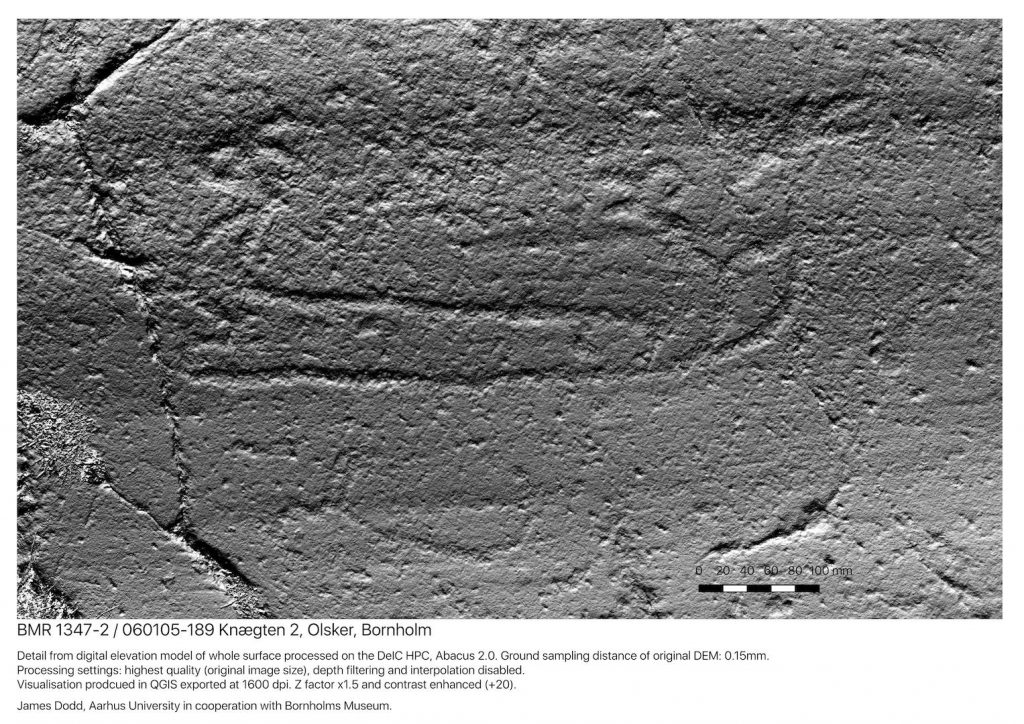Principal Investigator: James Andrew Dodd
School of Culture and Society – Department of Archaeology and Heritage Studies – Aarhus University (AU)
Prehistoric rock art is a threatened resource, offering an unprecedented, irreplaceable, insight into the visual culture of past societies.
Documentation is the basic foundation of rock art studies, be it: research, measuring rates of degradation or digital preservation. The recording of rock surfaces evidencing rock art requires the ability to examine features of the surface, including differences in depth of 0.2-0.5mm. The opportunity to record the art found in the open air is often a unique opportunity, as the carvings are disintegrating due to weathering – a process which is aggravated by the environmental impact of humanity. Eventually, no evidence will remain and we will only be left with the documents we have captured. Due to all these factors, surfaces need to be recorded in great detail and very precisely.
Previously, the application of image based modelling to the documentation of rock art has been constrained by the processing power, which imposes problematic limits on the size and quality of the results. These challenges are compounded by the level of detail required for rock art recording, which can lead to long processing times (up to several days). Therefore, we cannot validate whether the quality of our recording is sufficient, or use the processed results in an accessible and portable manner to inform our investigations and interpretations.
The computational capacity of high performance computing transforms the use and quality of the products of 3D image based modelling. In this project, the processing of image based models on ABACUS2.0 is controlled remotely from the field in real time, via the mobile phone network, as part of programmes of systematic recording connected to the investigator’s PhD project at Aarhus University, which also draws upon resources awarded to the Digital Research Infrastructures and eScience in Archaeology & Heritage project. Use of HPC in this way transforms image based modelling from a passive product of post-processing into a powerful on site tool, enhancing and augmenting our abilities to investigate the evidence.
At the same time, valuable documents are created, preserving a digital record for the benefit of all, in the spirit of the principles of open science. It is intended that all documentation being collected will be made publicly available via either existing or forthcoming digital platforms. In the meantime, two samples of the outputs from ABACUS2.0 can be found below:


Further details concerning the workflow, methodology and integration within archaeological interpretation can be found in the 2018 edition of the journal Adoranten. One article discusses technical details, whilst another, illustrates how the results of documentation processed on ABACUS2.0 can be used to inform interpretations. In this particular case, the most widespread symbol within rock art world wide: the cup-mark.